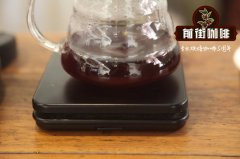What is decaf coffee? Is decaffeinated coffee good?

Professional coffee knowledge exchange more coffee bean information please follow the coffee workshop (Wechat official account cafe_style)
The so-called decaf coffee
It means that the coffee beans are processed before they are sent to the roaster to separate the caffeine that affects sleep. However, decaffeinated coffee is not 100% caffeine-free. It can only remove 94% to 98% caffeine and still contains trace amounts of residual caffeine. At present, there are three commonly used low-cause treatment methods, namely, dissolving method, Swiss water treatment method and carbon dioxide extraction method.
Decaffeinated coffee originated from the great German poet Goethe. His brother likes coffee, so he often can't sleep properly, so he asks his chemist friend Runge to analyze what ingredients are in the coffee beans and interfere with sleep. In 1820 Rongi separated the caffeine from the beans and became the ancestor of decaf. However, at that time, the technology could not produce decaf coffee in large quantities, only that the substances that caused insomnia caused by coffee beans could be extracted. It was not until 1903 that there was a major breakthrough in the technology of extracting caffeine and mass production began. This is due to Ludwig Roselius, a German coffee importer, and the chemists who assisted him. Roserus found that once imported raw coffee beans were soaked in sea water, the caffeine content decreased a lot, so he hired a group of chemists to study it and developed a new technology for extracting caffeine.
Solvent extraction method
Roserus is inspired by the loss of caffeine from soaked raw beans. Heat the beans in a high-pressure steam pan. After the beans are looser and softer, add benzene solvent to extract caffeine. Although benzene only chooses caffeine as the extraction object and does not extract other ingredients from coffee beans, benzene is toxic and drinking decaf coffee made by benzene solvent extraction is harmful to health. However, the awareness of health care was very weak at that time, and Roserus founded Kaffee HAG in Germany in 1906, which was the first company to produce decaf in large quantities.
The medical community is gradually worried that the residual benzene in decaf coffee will cause harm to the human body. Chemists have also developed extraction solvents dichloromethane and ethyl acetate without safety concerns. The advantage of dichloromethane is that the boiling point is very low and volatilizes when heated to 40 degrees Celsius. After years of testing, the US Food and Drug Administration (Food and Drug Administration) approved dichloromethane as the legal caffeine extraction solvent in 1985. As for ethyl acetate, it is safer because some fruits contain more ethyl acetate than decaf coffee and are also listed as legal extracts in the United States. Solvent extraction can be divided into direct and indirect methods. However, the pre-operation of the two methods is the same, and they must be softened first, that is, the coffee beans are steamed at high pressure and high temperature, and the bean surface expands, resulting in an increase in contact area with the liquid, and then the dichloromethane or ethyl acetate solvent is added to extract caffeine. This is called the direct method, which is the method used by Roserus. The difference is the extraction solution, which used toxic benzene in the past, and now uses safe dichloromethane or ethyl acetate. Another indirect extraction method is that the coffee beans are softened and placed in warm water, and the caffeine and other ingredients in the beans are dissolved into warm water, where the solution almost becomes a coffee essence, and then into another container. Add dichloromethane or ethyl acetate, extract the caffeine, slightly heat the caffeine will evaporate with the extraction solution. Finally, the non-caffeinated essence is introduced into the coffee beans previously extracted by warm water to reabsorb or replenish the lost ingredients. Generally speaking, indirect extraction will lose more coffee flavor, which is not as ideal as direct extraction.
Important Notice :
前街咖啡 FrontStreet Coffee has moved to new addredd:
FrontStreet Coffee Address: 315,Donghua East Road,GuangZhou
Tel:020 38364473
- Prev

What does a coffee bean go through when it changes from a seed to coffee? where did the coffee bean come from?
Professional coffee knowledge exchange more coffee bean information please follow the coffee workshop (Wechat official account cafe_style) have you ever thought that every day you drink coffee is a long way to your cup, from the moment the coffee tree was planted, after picking, processing, transportation, acquisition and other steps to show the best side of coffee to every customer today
- Next

Drinking coffee is not healthy? What is the effect of coffee on the body?
Professional coffee knowledge exchange more coffee bean information Please pay attention to the coffee workshop (Wechat official account cafe_style) Coffee, as early as 2500 years ago in Arabia began to grow and as a drink, introduced into Yemen in the 9th century, introduced to Europe and Asia in the 15th century, and then introduced to America, popular all over the world, now coffee has become one of the three major drinks in the world. And today, when China has experienced rapid development,
Related
- Beginners will see the "Coffee pull flower" guide!
- What is the difference between ice blog purified milk and ordinary milk coffee?
- Why is the Philippines the largest producer of crops in Liberia?
- For coffee extraction, should the fine powder be retained?
- How does extracted espresso fill pressed powder? How much strength does it take to press the powder?
- How to make jasmine cold extract coffee? Is the jasmine + latte good?
- Will this little toy really make the coffee taste better? How does Lily Drip affect coffee extraction?
- Will the action of slapping the filter cup also affect coffee extraction?
- What's the difference between powder-to-water ratio and powder-to-liquid ratio?
- What is the Ethiopian local species? What does it have to do with Heirloom native species?

